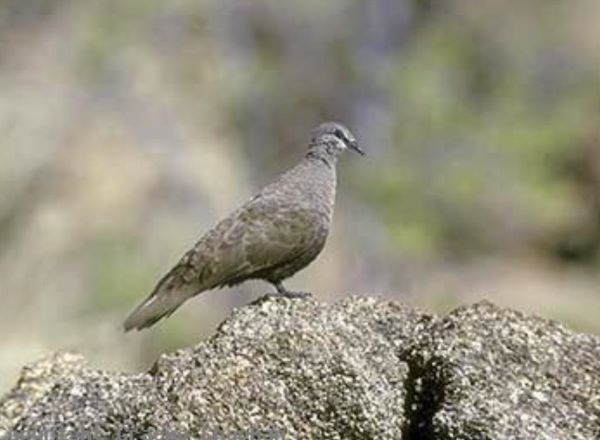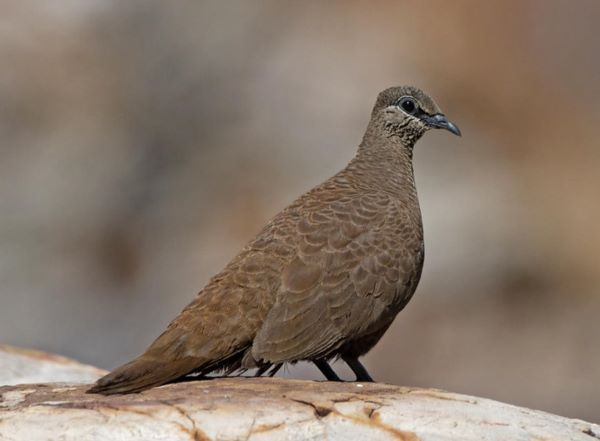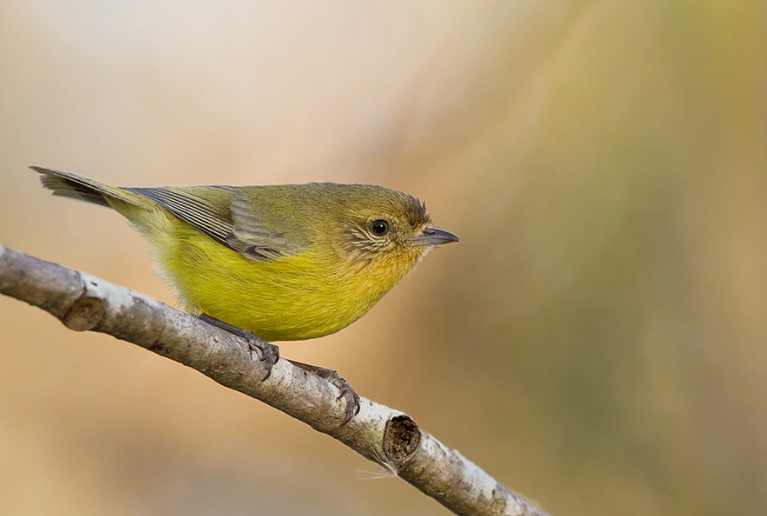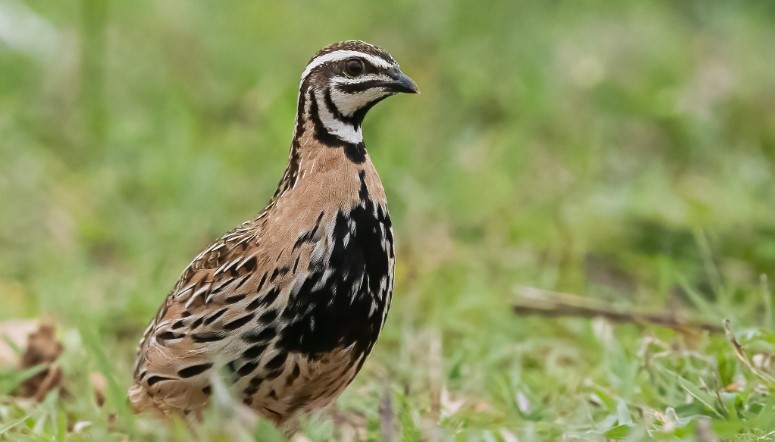Family: The white-quilled rock pigeon (Petrophassa albipennis) is a member of the family Columbidae in the genus Petrophassa.
Identification: Both adult sexes are similar. The crown is brown with lighter scalloping, which is dusky; the rest of the upper parts are brown with russet scalloping. Wing brown; in some areas, primaries have a large white patch, which may be smaller or missing in other regions. Throat black, boldly spotted with white; white line under eye; breast as upper parts; belly and undertail dusky. The eye is dark brown; the skin around the eye is blue-grey. The bill is black. The feet are purple-brown. General plumage is redder than chestnut-quilled. The immature bird is a bit duller than adults, with indistinct throat spotting. However, the downy young are sand-colored.

Habitat: It is endemic to Australia. Like the chestnut-quilled rock pigeon, the white-quilled lives among cliffs and hills of broken sandstone and conglomerate, spending all of its time on the rocks in pairs or small loose groups. The white-quilled rock pigeons are much the same as those of the chestnut-quilled, but the birds are recognized as different species because of subtle but important differences in plumage pattern. White-quilled rock pigeons do vary in color, becoming redder-brown and with less white in their wings eastwards, but do not show any trend towards the chestnut-quilled. As far as is known, the two birds never interact since the Daly River drainage in the Northern Territory cuts through their habitat. Calls and displays are almost identical to those of the Rock Pigeon, which has chestnut-quilled feathers.
As far as is known, the two birds never interact since the Daly River drainage in the Northern Territory cuts through their habitat. The pigeon not only has a white patch in their flight feathers but also a black throat spotted with white and plain brown feathering from neck to rump. It sleeps there, nests there, drinks there, and feeds there, mainly on the seeds of grasses and legumes that it takes on nimble foraging forays among the tumbled boulders.
Even when flushed, it rises with a clatter of wings, not to a tree but to plane quickly off to the shelter of the rocks. Its usual ruse to avoid detection, however, is to freeze in a squat, the bird blending with its substrate.
Nesting: For the white-quilled rock pigeon, few nests were reported, all from March to November in the dry season. Nest a few loosely arranged spinifex stalks and twigs in an open rock crevice to a substantial pad of sticks, 150 mm in diameter and 25 mm thick, like a nest of the Chestnut-quilled species; placed on ledges or in crevices sometimes sheltered from above, 1-6 meters above ground.
Eggs and Incubation: A white-quilled rock pigeon lays two eggs; smooth, glossy white; ellipsoidal, about 26–30 x 20–22 mm. The incubation period is about 17–18 days for both sexes. Young fledge in about 15 days.
Vocalizations: The white-quilled rock pigeon advertising calls a two-to-five note coo, coo-car-rook, varied in excitement and alarm; a higher-pitched croaking coo is also in alarm; the display coo is loud and hoarse, given at the bottom of each bow by the male.
Distribution: white-quilled rock pigeon is found in sandstone ranges throughout the Kimberley region, Western Australia, and Victoria River district, NT. The pigeon’s natural habitat is rocky gorges and escarpments, where it may freely wander between the stones and rocks.
Races: There are two races.
-
a. boothi – (Goodwin, 1969) with limited distribution and almost without a white wing patch in the Stokes Range, Victoria River district.
-
However, P. a. albipennis (Gould, 1841) has extensive wing patches everywhere else.
Taxonomy: John Gould identified and named Petrophassa albipennis in 1841; the fact that no other names have ever been recorded attests to the appropriateness of the name.
Other Name: It is also known as the Rock Pigeon.
Size: The white-quilled rock pigeon measures about 260–290 mm in length, with wings measuring 120–145 mm, and weighs about 120–155 grams.
Read More: Feral Pigeon







